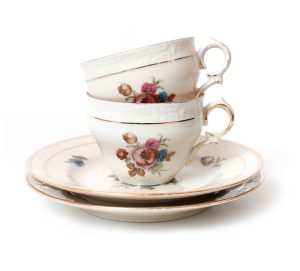Category: personal storage
The market is starting back up, viewings are happening and houses are selling. If your house has sold and you are preparing for moving day, you probably already have a lot on your mind. So, make moving day a little less stressful with our top tips.
Start packing early.
Unless you live in a very small bedsit, you likely have a lot more stuff than you realise to pack. So don’t leave it till the last minute. Start packing early, tackling one room at a time, and label every box clearly so you know what to unpack first and what can wait for a while while you settle into your new home.

Make a moving day list
There is a lot to remember on moving day, from turning off any services and cancelling the broadband to giving your new address to the neighbours. Always do one last walk through before you close the door, and remember to post the keys through the letterbox.
Charge up all your devices
Make sure your phone is fully charged for the day, and that you have the number for your movers, the sellers of your new home and the estate agents, in case there are any last-minute panics.
If you have children with you, make sure their devices are charged too. You might plan on having them help you move in if they are old enough, but in the end it may just be easier to keep them occupied.

Arrange pet care
Much as we love the furrier members of the family, having the dogs and cats underfoot while you move in will add to your stress, especially if they get out and lost before they know the way around their new home. So arrange to put them into pet care or ask a friend to look after them while you unpack, and introduce them to their new home once you have finished unloading the van.
Plan for your first night
Moving day is a long and tiring event. Plan ahead for the essentials – a nice hot cuppa. Prepare a box of essential items that you’ll want immediate access to. The kettle, mugs, coffee and milk, a spoon, and toilet roll.
Don’t forget to feed yourself and the family too. Prepare some sandwiches and snacks for the day time, and a meal for dinner. By the time you’ve settled in, you may not feel like cooking or heading out for a takeaway.

Set the beds up first
The first piece of furniture you need to set up are the beds. After a day of hauling boxes you’ll feel much better when you know you can climb into a clean bed at the end of the day and get a good night’s sleep.
Only take what you need
If you are moving a family-sized amount of furniture and belongings, it may be more than you can face in one day. Renting a self-storage unit for the short term will make your move a lot faster and easier.
Pack away the heavier and bulky items, the clutter from cupboards and seasonal décor, and leave it all in storage until you’re settled in. You can collect the rest from your unit when you are ready for it, and once you’ve decided where in your home you are ready to put it.
Take the stress out of moving day by planning ahead. As the evening arrives you’ll be all settled in for the evening and ready for your dinner and a glass of wine.
Have you ever thought about what you would do if you had a little more space in your home? How about if you had a whole extra room?

A traditional spare bedroom
The first use that springs to mind is an extra bedroom – the traditional meaning of a spare room. If you have regular visitors staying overnight, grandparents stopping by to look after the children perhaps, then having an extra bedroom prepared is obviously useful.
But if it’s only used occasionally, then handing over an entire room in your house to an empty bed seems a bit wasted when there are plenty of day bed or inflatable options that mean when they aren’t needed, you can hide them out of sight. So, what could you do with that spare room?
A home office
As many of us have found in the last few months, when you are working from home you need a little peaceful space. Imagine having a little den of your own, a place where you can pile up the paperwork, printer and boxes of stock and keep them away from the rest of the house.
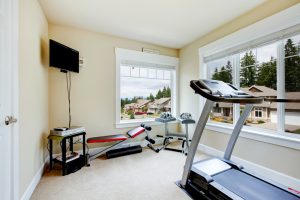
Your home gym
When you have a gym in your home, just think of the advantages. You can get straight out of bed and start your day with a workout, without having to travel anywhere. No more queuing for machines. Straight upstairs to your very own shower, with all your preferred toiletries to hand. Having a gym in your home means you can fit in small amounts of exercise daily around your own routine, rather than having to schedule slots into an already busy day.
A personal library
Wall to wall bookshelves, a cosy armchair, and a standing reading lamp. Turn your spare room into your own hiding space and enjoy the peace and quiet. We’d have to put a coffee machine in there too.
A walk-in wardrobe
If you love fashion, you’ve probably got a large pile of clothes and a wardrobe that’s just so full you can’t see one shirt from another. Imagine walking into a room lined with clothes rails, a large full-length mirror, wonderful lighting, and a rack just for shoes. If that’s your dream, then all you need is to make some space in your home to bring it to life.
A games room
Not all playrooms have to be for children. In fact, if you are going to put a pool table in yours, you should probably keep them out. With some thought into how to make the most of your space, you could create a fantastic place to entertain friends. Pool might not be your thing, so how about table football or a dartboard?
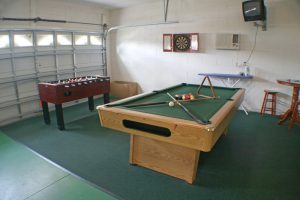
Your own bar
When you enjoy socialising but want control of the music, then having your own bar is a great idea. If you have a spare room downstairs or can convert your garage, you’ve got the perfect space to set up a mini-bar and wine rack. Invite friends round and enjoy karaoke nights – it might be best to invite the neighbours.
A craft studio
Whether you enjoy sewing or jewellery making, crafting usually requires a fair amount of space. You need to store your sewing machine, beads, fabrics, materials, and books. Having your own craft room means you can keep the mess in one place, and you don’t have to clear up partway through a project so that the table can be used at mealtimes.
If you do decide to make more use of the spare room in your home, the first thing to do is declutter. If you need to store anything with us, we’ve on hand to talk about storage units. Just give us a call on 0121 250 5055.
It may have started in America, but as with many things, self-storage is rapidly becoming more popular in the UK. More and more storage providers are opening for business and, according to the SSAUK, approximately 13% of households have used self-storage at some point.
With increasing numbers of homeowners and commercial businesses turning to self-storage as a simple and cost-effective solution to their storage needs, here’s a look at some of the more common reasons they do.

More bedrooms in the home
If you are expecting a new baby, you’ll need to turn your home office into a safe haven for tiny fingers. But you won’t want to get rid of the existing furniture – before long your baby will be moving back into big sized beds and wanting desks of their own.
Home office to work office
Talking of your home office, as your business expands you don’t want to keep boxes of stock in your house and taking over your hallways. The downside of working from home is that you can never quite escape it – but having a small office set up in your own storage unit keeps costs down, and your home life separate.
Moving house
When you are moving home a temporary bit of storage can come in useful. Declutter your current home and stage it for a quick sale, or store all your excess stuff until you are settled in to your new home and you’re ready to unpack at leisure.

A secure place for your tools
If your business depends on your equipment, it’s vital that you keep it safe and secure. Keeping tools in your van is risky, when one burglary later and you have not only lost expensive gear, you may well lose a few days work as well. Keeping tools in self-storage gives you a well-protected lock up and a place to repair, clean and maintain your tools as well.
Merging homes
You may be moving in with your partner, or your elderly relatives may be moving in with you. Either way, that’s two houses full of furniture, beds, kitchen utensils, plates, books, and bedding that need sorting through and thinning out. Using self-storage to keep things in means you don’t have to get rid of anything you love but have no space for, and you can take your time in dealing with the rest to get the best deals.
Seasonal storage
There are certain times of the year when you need to boost your stock – Christmas being the obvious one. Making sure you are ready for seasonal sales means ordering in additional products. With more room you can get more than you need, so you don’t have to turn down sales. Short term storage contracts make the perfect solution – your home or shop remains uncluttered, and your boxes don’t get crushed and damaged in small spaces.
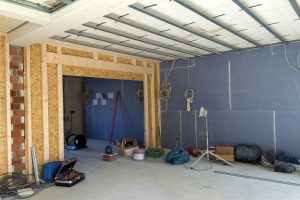
Renovating your home or office
From simple redecorating to knocking down walls and remodelling rooms, renovating always creates a lot more mess than you expect. Move all your furniture or important office equipment out of the way for the duration, and you’ll avoid paint on your sofa or damage to your printer.
At Cookes Storage our units are available in a variety of sizes and with short and long term flexible contracts, so that you only pay for the space you need, for as long as you need it. With CCTV, PIN code entry and indoor units, you have all the security and protection you need to keep your stuff dry, safe and secure.
If you haven’t considered self-storage until now, let’s talk. We have all the space you need.
Losing a family member is a deeply emotional time. Sadly, we often don’t get a chance to really grieve before we’re plunged into dealing with the necessary paperwork and organising that comes with it.
If you’ve inherited a house full of stuff, you’ve got even more to sort out. However, this is one place where you feel under pressure to get things done, while what you really want to do is slow down.
Your inheritance might be the home you grew up in or of someone you were particularly close to, and it’s important to give yourself time to decide what to do with their belongings, and the property itself.

Bringing in some outside help
There are businesses who can help you empty and sort through the things in your inherited home. But you don’t have to bring in strangers. Don’t be afraid to ask a friend to come along and help you get started, even if that’s removing the everyday items such as toothbrushes, medicines, food from the kitchen and calendars from the wall.
Pick out sentimental items
More than likely there will be particular items that have sentimental meaning to you. Take a box to put these in, and put it aside so that it doesn’t accidentally end up in the wrong pile. Don’t forget to ask family members if there is anything they want to keep as well.
Priority paperwork
There are some things that need sorting sooner rather than later. You’ll need to find and prioritise the important paperwork – bills, bank accounts, insurance and so on. Gather together everything you’ll need, and make a list of the people you need to contact. It may be that bank accounts and financial documents can be passed on to the deceased persons accountant.
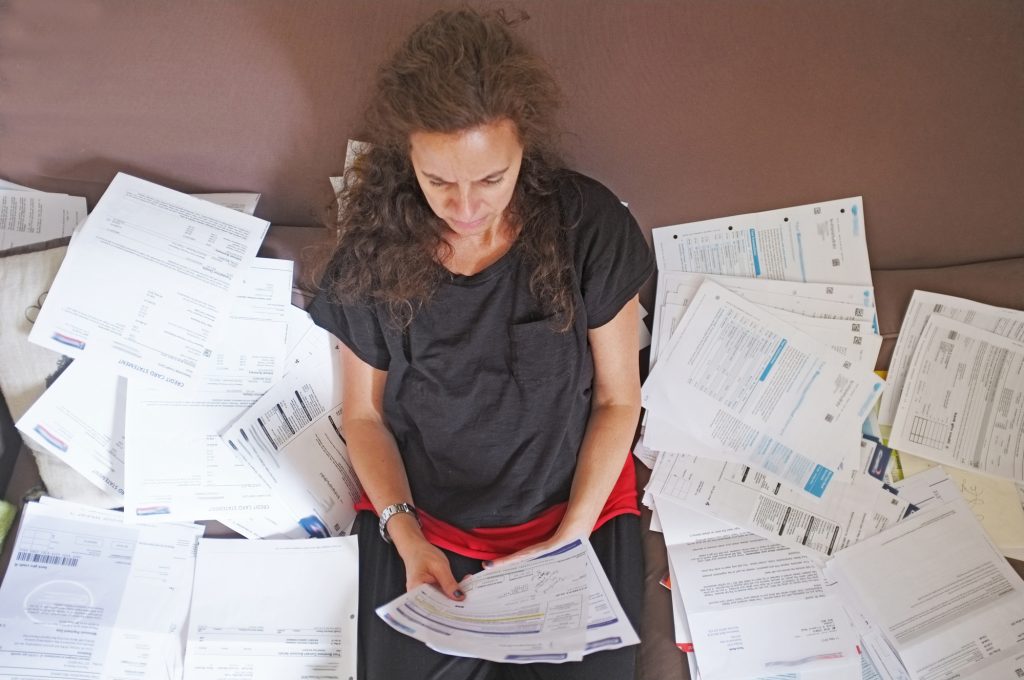
Donate, Sell and Recycle
After the initial burst of organising is over, you’ll be left with a house full of things to sort out. There is no right or wrong way to go about this, but you may find it easier to work room by room, as otherwise the size of the job can become overwhelming.
Sort everything into piles – things to keep, things to donate, items that you can sell and those that need to be recycled or binned.
The kitchen may be one of the easiest rooms to start in. A lot of the items will be less personal and duplicate of those you have at home – cutlery, cooking bowls and mixers. Pick out anything you might want to replace those you have at home, and place the rest for donation.
As you sort through the house you will likely come across items that may be of value. If you don’t know how to price them, then put these aside until you have time to investigate further. Many local auction houses will provide a free valuation and, if you have a sizeable amount of items, the auctioneer will visit the house to give you an overall opinion. It is also possible to email pictures of larger items to them, such as furniture, for an idea of whether auction is the best route.
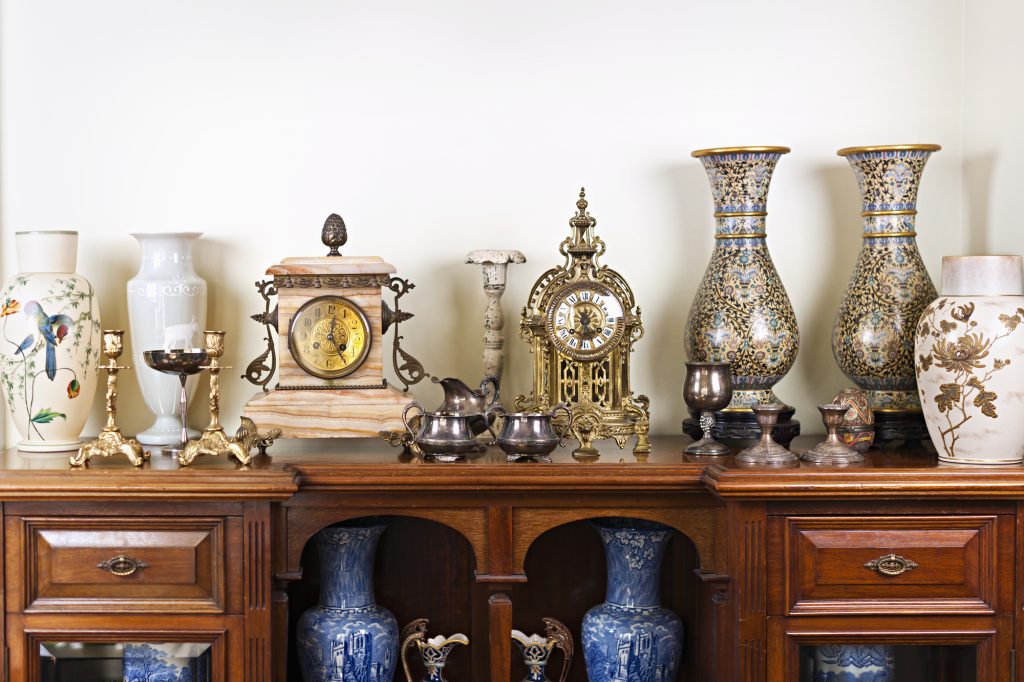
Items you want to keep
Finally, consider the items you would like to keep. There can be practical reasons to keep extra furniture and household items. If you have children that will soon be moving into their own homes they will need beds, sofas and so on to get started, while if you plan to let the house to tenants, you may keep some furnishings.
Some items, furniture in particular, can be hard to get rid of, especially if it’s a larger piece or out of fashion. You might not want it in your own home, but feel reluctant to part with it. You may also have a pile of belongings that you just aren’t ready to part with for sentimental reasons, or want to leave for a while before you tackle them.
Giving yourself time to grieve is perfectly understandable and necessary, rather than making rushed decisions that you later regret. Unfortunately, we often don’t have the luxury of time to deal with a loved one’s belongings, as we need to deal with the property itself.
Placing these items into a self-storage unit is a cost-effective way to keep them safe and dry. You’ll have time to decide what you want to do with them, or until you need them. Meanwhile the property will be empty, and you can decide whether to sell it or keep it on.
If you need help moving your furniture or boxes into storage, please ask us about our free collections service. Our experienced in house team can help collect your items and place them inside your self-storage unit, giving you one less thing to worry about at a difficult time.
You’ve rented your storage unit, you have a van full of much-loved furniture and precious heirlooms – and now you need to put it all in your unit. It sounds simple, but it is worth putting a little forethought into how you use up your space.
Here’s just some of the things you need to consider when you’re unpacking your van.
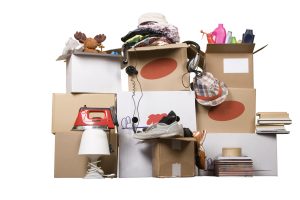
Plan what you’ll need in advance
How you stack your storage until will depend on what you intend to use it for. If your unit is an extra cupboard, a place to keep your Christmas decorations, seasonal sports gear or garden tools, you might want some racking installing to help keep things organised and accessible.
If you do without racking, then put the items you use most frequently towards the front of the unit, to save having to lift everything out of the way each time you want to get in.
If you plan on long term storage of your furniture, plan on putting the heaviest and largest items of furniture in first. That way you can carefully pile smaller boxes and fragile items on top of the furniture, keeping them from being crushed and making the most of your room.
However, customers in the middle of a house move may find it easier to put the largest items of furniture in last. That way, when you open your storage unit they are right at the front, ready to go into the removals van first. If you are moving in a couple of trips, this also means you can get all the furniture into your new home and in place, before returning for your small items.
Take care of your sofa
One of the things we see most often is damage caused to items that are badly stored. You might think that standing your sofa on end in the unit is a great way to make the most of your available space. However, take a look at your sofa arms first. Are they strong enough to take all the weight for a long time?
If you do plan on stacking your sofa on end, wrap the arms in cardboard to protect them from scratches r fabric tears and stains. The space you save in the short term is not worth the cost of damaging your expensive sofa.
Wrap and protect your furniture
Protect the surfaces of your larger items as well. Taping some cardboard onto table tops before you pile your boxes on will help prevent marking.
Make sure you place furniture the right way up. If you stack your table upside down, or lean it against the wall without care, you could end up with scratches that are visible for ever more.
Use some bubble wrap to cover sharp corners. It will stop them being knocked as they are carried from van to unit.

Use strong boxes for smaller items
There’s a tendency to grab any old cardboard box to store our smaller items – often saved from deliveries to our homes. However, using purpose made storage boxes may save you some cracks and breakages.
Large cardboard boxes may not be so strong in the centre, particularly when overfilled with heavy items and stacked in a pile. Using the same sized boxes will also make piling things up a little easier – no balancing unstable pyramids in your unit.
Don’t forget to label your boxes so you know where everything is – and so you can place fragile items at the top of the stack.
Make use of the space
Make sure you make the most of the height of your unit. Careful planning will ensure that boxes can pile up high without falling, and furniture can be stood on top of each other as long as it’s done carefully.
It’s very easy to over or underestimate the space you’ll need for your furniture and boxes. Our team are able to advise you on the size unit you need, so that you are not left with a mass of unneeded floor. A badly packed unit can mean you leave plenty of unused space that you cannot access, and the need to rent a second unit, which could have been avoided.
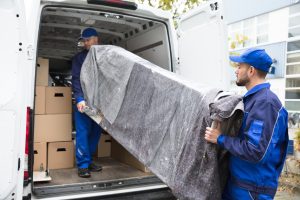
Choose a reputable moving firm
If you choose to use a moving firm, take your time in choosing the right people. Don’t assume they will wrap your furniture before placing it in your unit – it’s best to do it yourself first.
Cost is also not always the most important consideration – if the firm you choose is rushing, they may take less care in placing items in your unit. This means more chance of damage and less care in using the space wisely.
As experts in both furniture storage and removals, our team take great care in moving your belongings from home to unit and back again. If you would like advice, packing materials or to find out about storage unit options, call us today on 0121 250 5055.

You’ve sold your house. Congratulations. Now it’s time to start packing – and there is one room that holds plenty of potential issues. So, follow our tips for getting your kitchen ready to go.
Appliances, knives, glasses, tea sets and dishes – whether it’s granny’s pie dish or a multi accessory blender, you’ll want to take care putting each item into a box to avoid breakages or damage. It’s incredible how much clutter builds up in the kitchen, and how little of it we actually use on a daily basis. So, you’ll need to get plenty of packing materials ready, including bubble wrap, tape and strong boxes.
Packing Appliances
Kitchen cupboards are hiding places for gadgets and small appliances, and all their associated parts. Tipping them all into a large box will just end up with a tangle of leads and unidentifiable pieces.
The best thing to pack them in would be the original boxes, if you have them. If not, a sturdy cardboard box will do. Start by cleaning each appliance thoroughly, especially if you are putting them into storage for a time. You don’t want to open the boxes to find mould.
Tie up power cables with elastic bands or, if possible, tape them to the machine. Wrap glass bowls, and sharp blades, and place all attachments in a plastic bag, alongside the appliance. It takes the guesswork out later.
Plan ahead. There are some gadgets you’ll want straight away – kettle, toaster, coffee machine – so put these all in the same box if you can. Remember to write the contents on the outside of the box, so you can find it easily.
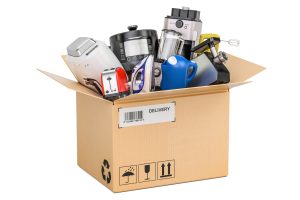
Packing knives and the cutlery drawer
Spoons, ladles, spatulas, graters, mashers, ricers, bottle openers and tongs – we have plenty of utensils. We all know what happens when they tangle together in a drawer, which then refuses to open. It may seem a simple idea to tip the entire pile into a box when packing – but imagine the tangle that will greet you when you try to unpack in your new home.
Take the time to have a bit of a sort out as you pack. Group the utensils together in small amounts, wrap each one in a piece of newspaper and tie an elastic band around the handles to keep them together, and the paper on. This will help stop them tangling, and make unpacking easier.
Knives, of course, need a little more care. You certainly don’t want to tip these into a box. By the time you’ve driven to your new home, carried in all the furniture and started to unpack, you’ll have forgotten about loose knives and put your fingers in danger rooting about in the box.
Put all the knives in a separate group or two, and wrap them in bubble wrap. This will ensure that, even if they move about during the drive, they won’t cut through the wrapping. Label the box clearly so you know which one they are in, and are more wary of sharp edges as you unpack.
Packing glasses and fragile items
Start by picking the sturdiest cardboard box you can find. Sort your glasses so that the drinking glasses go in first. Check each one for cracks and chips – perhaps it’s time to get rid of these, saving yourself some space. Wrap each glass individually, tucking the corners of the paper into the mouth of the glass, and place each one mouth down in the box.
Once you have filled the bottom of the box, place a layer of bubble wrap or paper across the glasses before starting the next row. Then, place the more fragile wineglasses and precious crystal on the top row.
Wine glasses can cause their own issues due to the fragile stem. Protect the stem first by winding bubble wrap around it, until the stem is as wide as the rest of the glass, before wrapping in paper and placing in the box.
Finally, remember to label the box clearly and note which way up it should be carried.
Dinner service and tea sets
We don’t all have delicate china tea sets anymore, but if you have, you risk ornamental handles knocked off, and cracks in the plates. Taking care when you pack will help heirlooms and much loved china travel in one piece.
Teacups, like wine glasses, require a little extra bubble wrap to keep the handles intact. For the most delicate of china, the best thing to use as cushioning is packing peanuts. Pack each item individually, and make sure none are touching each other or the bottom if you can.
Stacking plates in boxes may seem simple, but the weight of the stack will easily cause the bottom plates to crack under pressure. Instead, place a layer of paper between each plate, wrapping a corner over the one above, and then stand the plates in the box on their side. Pack scrunched up paper into any gaps or corners, and your plates will be immobile without being crushed.
It might take time, and a lot of extra paper, to pack up your kitchen carefully, but you’ll appreciate it when you can unpack without damage or breakages.
If you need packing materials, we have strong boxes, tape and all the bubblewrap you need in our box shop.
